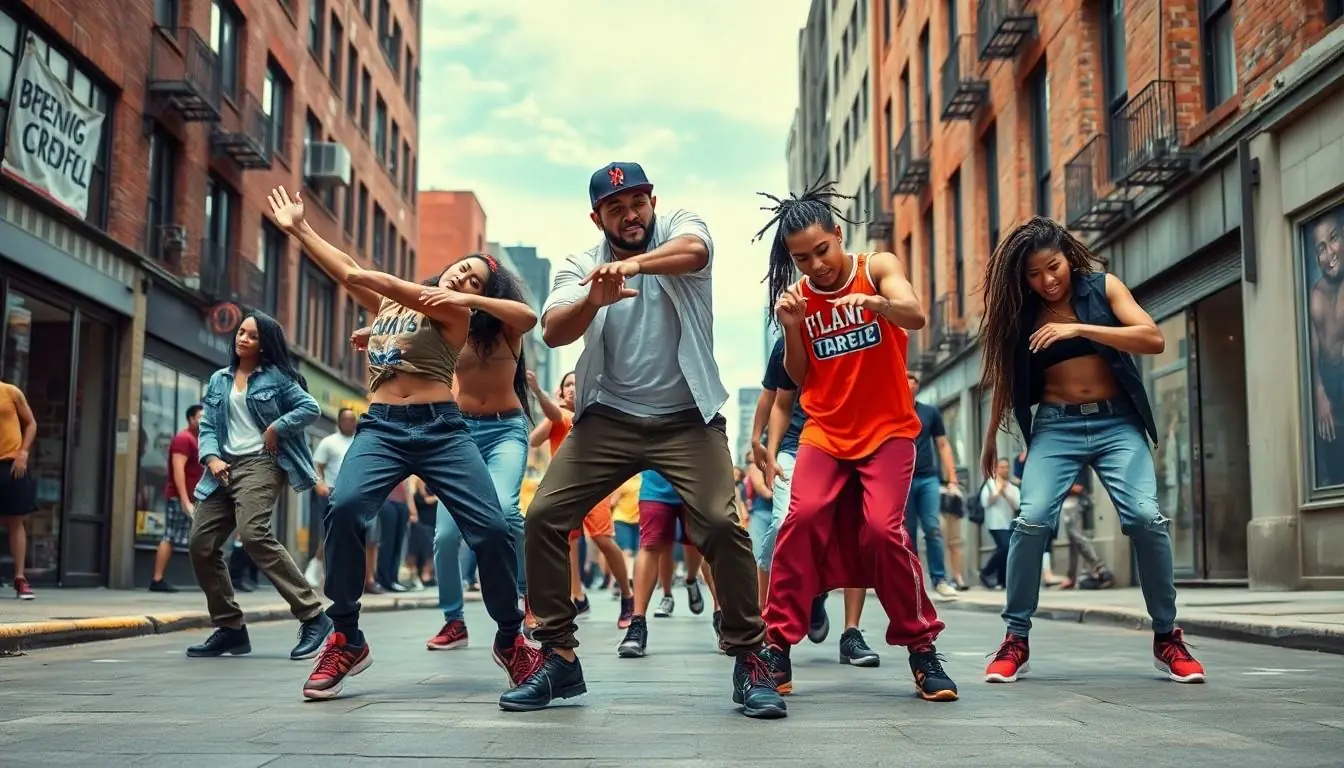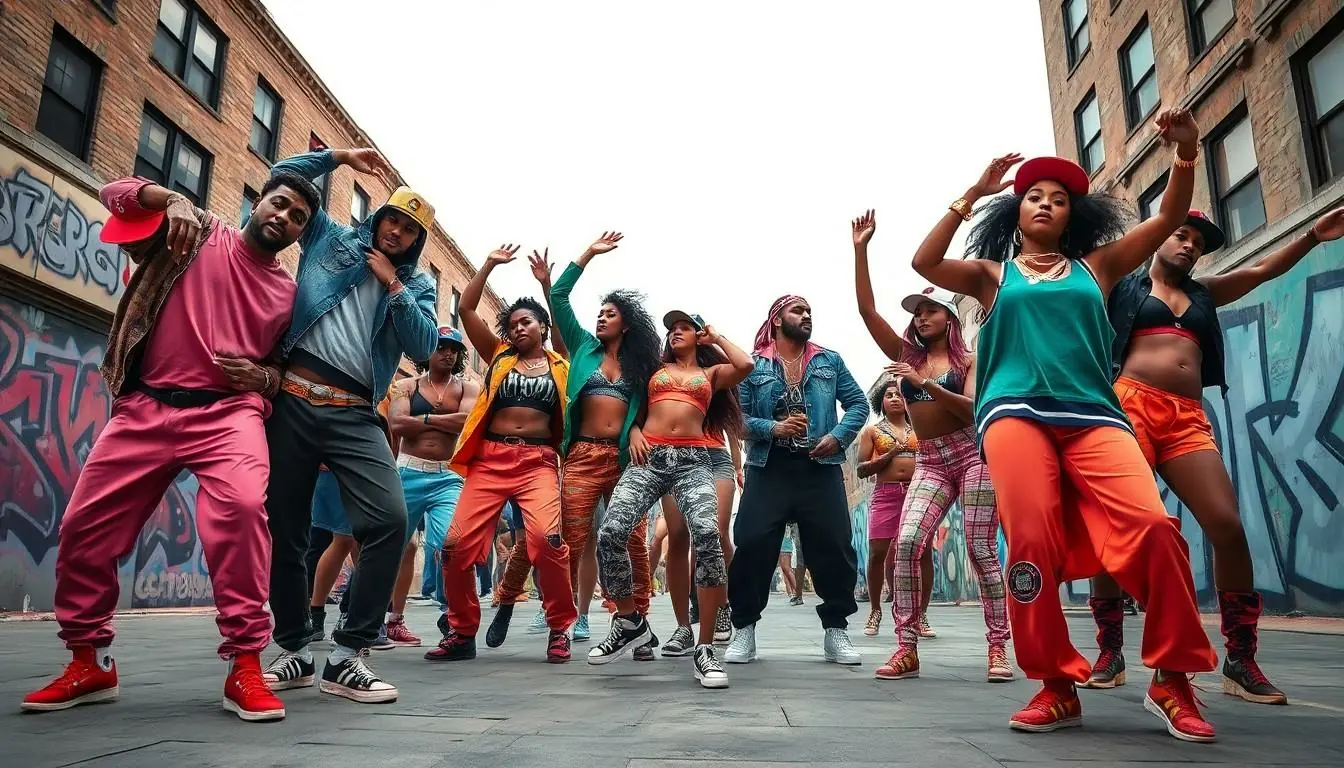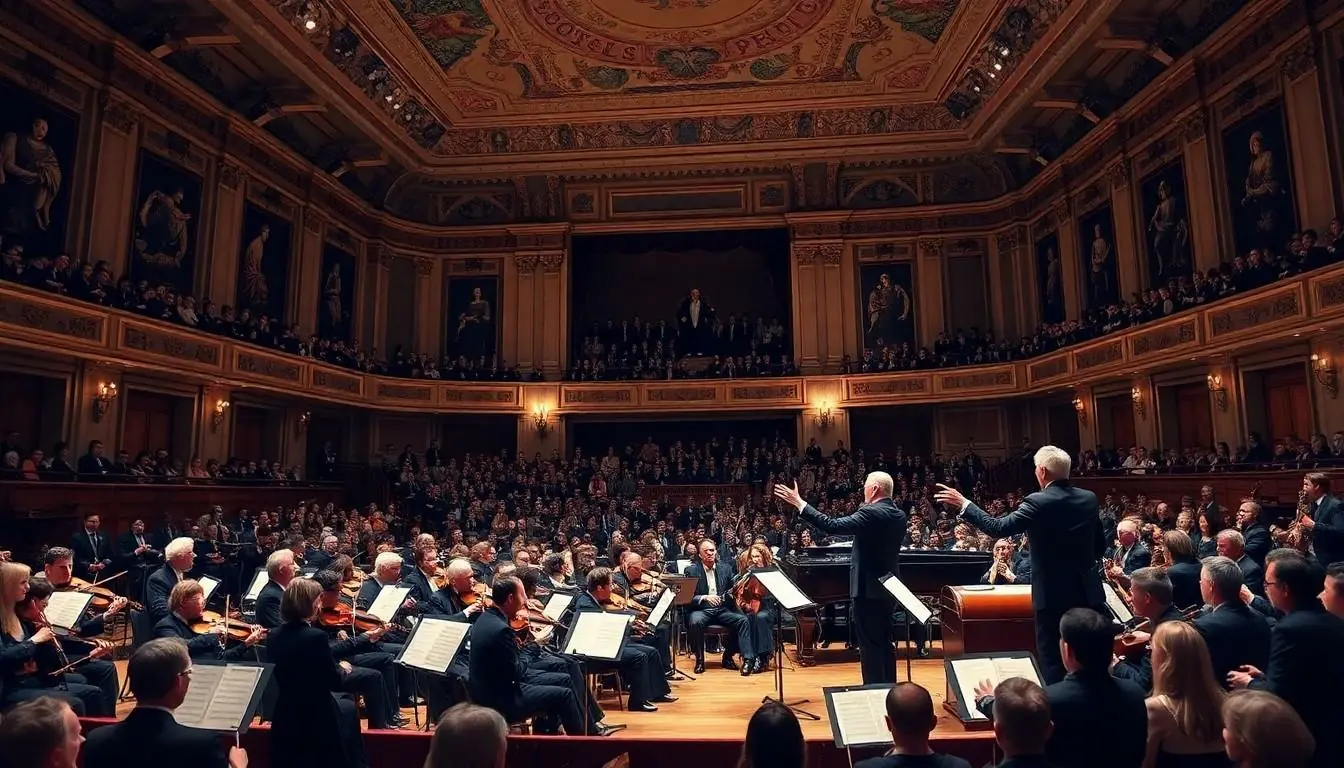When it comes to hip hop, the rhythm isn’t just in the music; it’s in the movement. Famous hip hop dancers have taken the stage and the world by storm, redefining what it means to express oneself through dance. These artists don’t just bust a move; they create a cultural phenomenon that inspires millions.
Table of Contents
ToggleOverview of Hip Hop Dance
Hip hop dance encompasses various styles, including breaking, locking, and popping. Originating in the 1970s, its roots trace back to African and Latino American cultures. This vibrant dance form showcases creativity and individuality through improvisation and stylization.
Performers often express personal stories and cultural themes through fluid movements and rhythms. Techniques vary widely; breaking emphasizes acrobatics and spins, while locking features distinct pauses and hand movements. Popping involves quickly contracting and relaxing muscles to create a jerking effect.
Hip hop dance serves as a medium for social commentary. Dancers often respond to societal issues, reflecting the lived experiences of their communities. Events like dance battles and competitions highlight this energy. These gatherings foster collaboration and creativity among dancers, pushing skill levels further.
Choreography plays a vital role in hip hop dance. Many performers collaborate on routines that blend various styles, ensuring a fresh approach. Each performance can differ significantly, targeting diverse audiences, which maintains the art’s relevance.
Innovative thinkers in the hip hop community continuously redefine the dance landscape. Dancers often draw on influences from other genres, integrating new techniques to captivate viewers. By blending various elements, they create an ever-evolving art form that inspires future generations.
Notable Figures in Hip Hop Dance

Hip hop dance boasts many influential figures who have shaped its evolution and popularity. Each dancer contributes a unique flair and artistic vision, pushing the boundaries of the art form.
Breaking Legends
Breaking emerged in the 1970s, influenced by street culture. B-boying legends like Kool Herc and Rock Steady Crew define this style through their innovative footwork and body movements. They’ve inspired countless dancers, showcasing creativity in battles and performances. Also, pioneers such as Crazy Legs and Ken Swift have left lasting marks with their signature styles, blending athleticism and artistry. Recognition of these figures elevates breaking as a true art form, leading to its global celebration in competitions and events.
Pioneers of Hip Hop Dance
Key pioneers laid the groundwork for modern hip hop dance. Artists like Don Campbell coined locking, while others like Jeffrey Daniel popularized it in the 1970s. These figures demonstrated the importance of personal style, influencing subsequent generations. Additionally, pioneers such as Twisted Style and Popin’ Pete brought foundational elements of popping to the forefront. Their inventive techniques and expressions fostered a vibrant culture that continues to thrive today. Celebrating these pioneers honors their critical roles in shaping hip hop dance’s rich legacy.
Modern Influencers in Hip Hop Dance
Modern hip hop dance continues to evolve, driven by innovative artists and their unique contributions. Dance crews and solo artists play vital roles in shaping this dynamic landscape.
Dance Crews and Their Impact
Influential dance crews like the Jabbawockeez and Quest Crew have propelled hip hop dance into mainstream culture. These groups showcase exceptional teamwork and creativity through intricate choreography. Collaborations among members lead to diverse styles, inspiring fans worldwide. Competitions such as America’s Best Dance Crew spotlight their skills and elevate their visibility. Crews often adapt to new trends while maintaining their signature styles. Overall, their presence on stage and screen enhances the cultural relevance of hip hop dance.
Solo Artists Revolutionizing the Scene
Solo artists such as Poppin’ John and Tricia Miranda redefined the hip hop dance scene with their distinctive performances. Each artist incorporates personal flair and innovative techniques that captivate audiences. Their influence extends beyond dance, embracing music videos and social media to reach global followers. Creativity drives their choreography, often blending various styles and elements. Many soloists share tutorials online, broadening accessibility to aspiring dancers. The impact of these individuals reinforces hip hop dance as an evolving expression of art and culture.
Dance Styles Within Hip Hop
Hip hop dance encompasses a variety of styles, each with unique characteristics. Breaking, often referred to as b-boying, includes acrobatic moves like spins and freezes. Locking blends rhythm with distinct arm and body movements, showcasing a playful flair.
Popping emphasizes quick contractions and releases of muscles, creating a robotic effect. Each style maintains strong roots in various cultural backgrounds, enriching the overall art form. Different styles also foster personal expression, allowing dancers to tell their stories through movement.
These dance styles often mesh in performances, showcasing versatility. Dancers frequently learn multiple styles, enhancing their skills and creativity. Events such as dance battles promote the exchange of techniques and innovations, pushing boundaries within the dance community.
Influence from other genres has shaped hip hop styles, adding depth and variety. Contemporary artists often incorporate elements of jazz, contemporary, and even ballet, keeping hip hop fresh. Collaboration between dancers and choreographers fuels ongoing evolution, introducing innovative techniques to the scene.
Moreover, competitions showcase these diverse dance styles, capturing the attention of audiences globally. Programs like America’s Best Dance Crew highlight choreography that combines various elements while staying true to hip hop’s roots. Influential dance crews embrace this challenge, setting trends and inspiring future generations.
Furthermore, individual dancers blend different styles to create unique performances, elevating the art form. Solo artists contribute to this dynamic by experimenting with their craft, attracting fans through social media platforms. Ultimately, hip hop dance remains a vibrant expression, celebrating diverse cultures and styles within its framework.
The world of hip hop dance is a dynamic tapestry woven with creativity and cultural significance. From its origins in the 1970s to its current mainstream prominence, hip hop dance continues to evolve and inspire. The contributions of legendary figures and innovative crews have solidified its status as an enduring art form.
As dancers push boundaries and redefine styles, they not only celebrate their heritage but also pave the way for future generations. The blend of various influences ensures that hip hop dance remains fresh and relevant, resonating with audiences worldwide. This vibrant expression of culture is a testament to the power of movement and the stories it tells.




